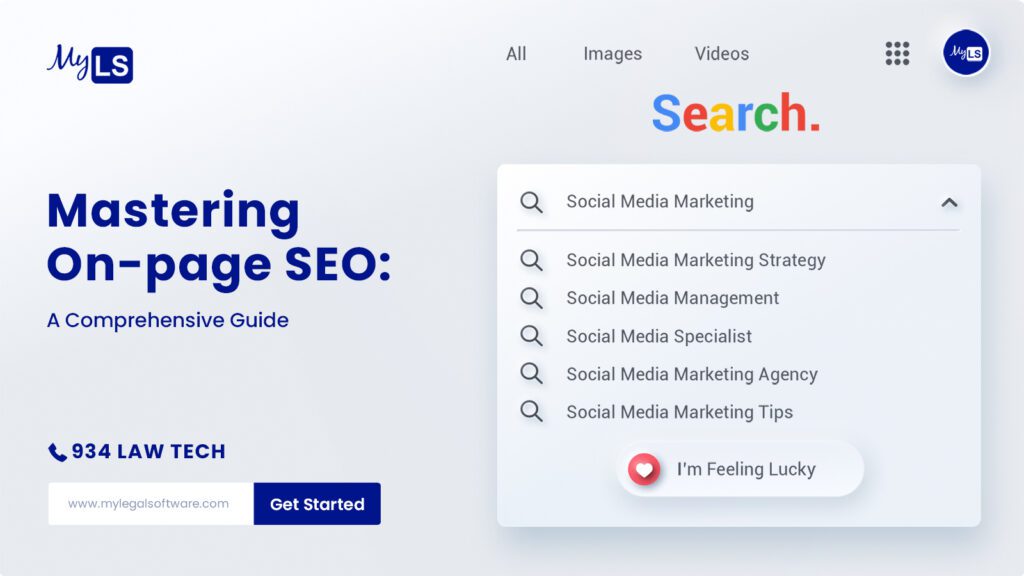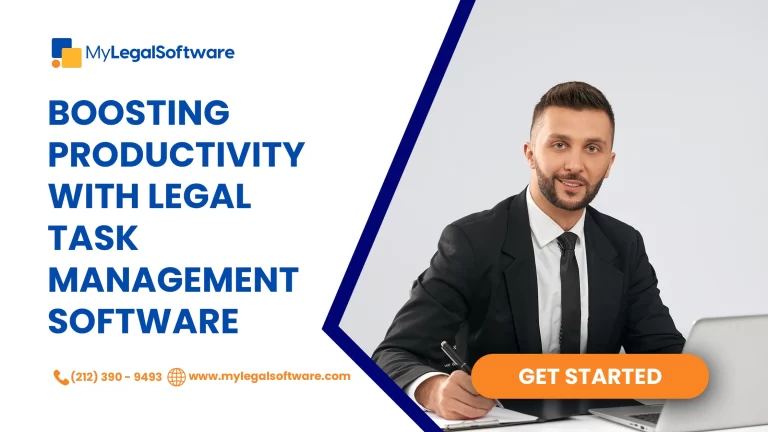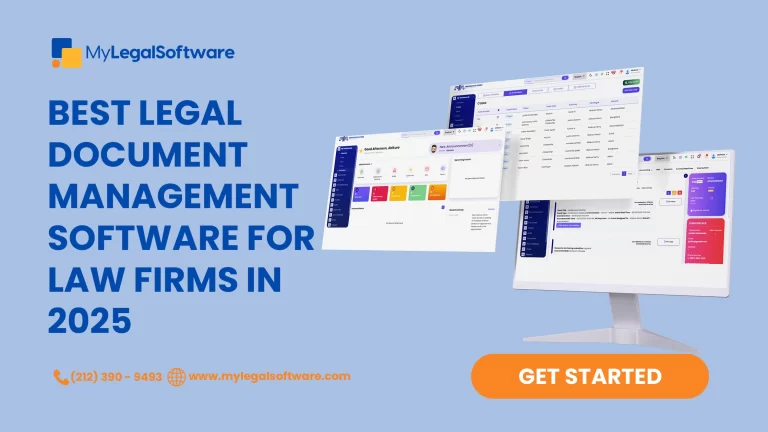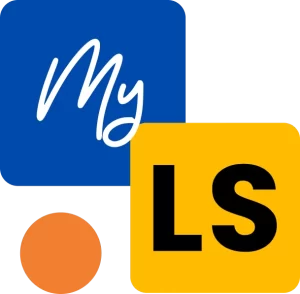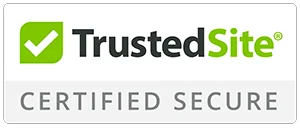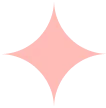Imagine your website as a beautiful book sitting in a vast library. It’s filled with valuable information, but there’s a catch—unless someone knows exactly where to look, it might remain hidden on the dusty shelves. This is where the art of On-Page SEO comes into play, transforming your digital content into a well-organized, easily discoverable masterpiece.
Welcome to “Mastering On-Page SEO: A Comprehensive Guide.” In this article, we’ll unravel the secrets of On-Page SEO—the set of practices that empower your website to not just exist but to thrive in the ever-evolving world of the internet.
What Is On-Page SEO?
Often referred to as on-site SEO, is the art of optimizing various elements within your web pages to elevate their ranking on search engines and attract more visitors.
It is like the architect’s meticulous process of enhancing these individual structures to make them more appealing and visible to searchers.
On-Page SEO VS Off-Page SEO
Tending to Your Website’s Interior:
On-Page SEO is about optimizing everything within your website to make it better and more attractive.
- This includes improving the content on your webpages, like adding useful information.
- It’s also about organizing things neatly, like using clear titles and making sure all the pages are easy to find and explore.
- You even choose keywords that match the style you want for your site.
Off-Page SEO – Enhancing Your Website’s Reputation:
Off-Page SEO is like building a great reputation for your website. It’s about what others say about your websites and how they recommend it to others. You can’t control this as directly as On-Page SEO, but you can still influence it.
- The biggest thing here is getting recommendations from others websites (backlinks).
- It also involves being social in your community (social media) and getting featured in local news (PR).
Both On-Page and Off-Page SEO are crucial for a successful SEO strategy, but On-Page SEO is where you have more direct control. So, starting with On-Page SEO is making sure your website looks its best before inviting visitors. Together, these approaches help your website grow and become more popular online.
The Importance of On-Page SEO
Search engines, like Google, use on-page SEO clues, such as keywords and other elements, to figure out if a web page is what a user is looking for.
If the page seems to be a good match and provides helpful information, Google will show it to the person searching. Essentially, Google pays attention to on-page SEO signals when deciding which pages to put at the top of the search results.
Now, even though Google’s algorithms keep changing, one thing remains constant: Google satisfying users’ searches. That’s why they suggest creating content that’s all about helping people.
So, it’s become more important than ever to create valuable content that matches what users are searching for. It keeps them coming back for more.
Having seen the importance of On-Page SEO, let’s look at optimizing your content for On-Page SEO.
Optimizing Your Content for On-Page SEO
On-page SEO involves more than just inserting keywords into your webpages. It’s about optimizing your content in various ways to make it appealing to search engines like Google.
How the Ranking Process Works Briefly Explained:
Here’s a quick overview of how the ranking process on Google functions:
- Google begins by evaluating web pages across the internet.
- Afterward, Google might “index” a page, which means it analyzes various factors, including on-site SEO aspects, to understand the page’s content and decide how it should be positioned in search results.
- If Google indexes a page, it becomes accessible through Google Search.
Therefore, it’s essential to fine-tune the on-page SEO elements discussed below. This optimization helps Google better understand your page’s content, which, in turn, enhances your chances of ranking for relevant search queries in search results.
Now, let’s dive into the details.
Craft Exceptional, Optimized Content
Create content that’s not just special and informative but also well-suited for search engines. Make sure that it’s both engaging to read and has keywords (the important words) in the right places for search engines to notice.
To achieve this, conduct keyword research to discover relevant topics and pinpoint target keywords. Examples of keyword research tools to use:








Note that while some of these tools offer free versions or trials, they may also have paid plans with more advanced features. You can explore each tool’s website for more details and choose the one that best fits your needs and budget.
Strategically Position Target Keywords
When you’ve identified your target keywords, the next step is to strategically position them within your content. Google analyzes your content to determine its subject matter, and readers to do the same. Incorporate your desired keywords in these critical sections:
- H1 Heading
- Opening Paragraph
- Subheadings (H2s, H3s, and so on).
Enhance Title Tags for Optimization
Title tags are HTML elements that signify a page’s title, and they present this title in search engines, social media posts, and browser tabs.
Furthermore, title tags play a role in search engine ranking and can impact a user’s decision to click on a page. Make your title tag catchy and descriptive, so both readers and search engines instantly understand what your page is about.
This is how they appear on search engine results pages(SERP):

Best practices to follow when writing your title tags:
- Be concise: It’s advisable to limit your title tags to around 50 to 60 characters to prevent Google from truncating them.
- Incorporate your target keyword: This assists Google and users in understanding the content of your page.
- Maintain uniqueness: Steer clear of duplicating title tags to ensure that each page’s intent is evident to Google, and users can discern the content they’re clicking on.
Write Compelling Meta Descriptions
A meta description is an HTML element that serves to provide a brief description of the content on your webpage. Typically, it appears in search engine results pages (SERPs) just below your page’s title, like this:

Meta descriptions do not have a direct impact on Google’s rankings of your webpage. However, they play a crucial role in influencing user behavior and can be the deciding factor in whether a user chooses to click on your page or opt for another one. Crafting effective meta descriptions can encourage more traffic from search results.
It’s important to note that if your meta description doesn’t align with the user’s search intent or the actual content on your page, Google might generate its own description for the search results.
To increase the likelihood of Google using your chosen meta description, consider the following best practices:
- Think Mobile: Keep in mind that Google may truncate meta descriptions to around 120 characters on mobile devices, so it’s wise to keep them concise.
- Include Target Keywords: Incorporating your target keyword not only helps users determine if your page matches their search intent but also makes your listing more visually prominent since Google may bold keywords or synonyms that match the user’s query.
- Use Active Voice: Active voice not only saves space but also communicates your message more clearly and persuasively.
- Add a Call to Action (CTA): Encourage users to click on your page by including compelling CTA phrases, such as “try for free” or “find more.”
By following these practices, you can optimize your meta descriptions for better user engagement and potentially higher click-through rates from search results.
Structure Your Page Using Headings and Subheadings
H1 tags and subsequent headings serve two important purposes:
- They facilitate effortless page scanning for users, making it simpler to find specific information.
- They enable Google to grasp the structure of your page, which is crucial for effective on-page SEO.
To illustrate, consider how challenging it can be to read a page without well-organized headings compared to one that uses them correctly.
This serves as a prime example of effective on-page SEO:

When you employ headings appropriately, your content becomes user-friendly, allowing for quick information retrieval.
Furthermore, headings assist Google in comprehending your page’s layout and evaluating its relevance to a user’s search intent. This, in turn, can enhance your chances of ranking higher for pertinent keywords.
You can also enhance the context provided to Google by incorporating keywords and their variations within your headings. The H1 tag should typically serve as your page’s title or headline, while H2s can be employed for covering subtopics. If you require further segmentation of content, consider using H3s, H4s, and so on.
Streamline Your URLs for Optimization
Your URL is the address of your website. Keep it simple and relevant, so people and search engines can find your page easily.
Utilize words that directly relate to your content to provide users with a clear understanding of your page’s subject matter.Avoid using arbitrary numbers, publication dates, or complete sentences in your URLs.
Sometimes, website themes automatically include these elements, so it’s crucial to edit your URL before publishing.
Incorporating your target keyword into your URL is an effective method to ensure that your web address aligns with the content’s topic.
Incorporate Internal Links
Integrate links within your content to guide readers to other relevant pages on your website. This is what an incorporated internal link looks like on a web page:

Internal links play a crucial role in optimizing your on-page SEO. Here’s why they are essential:
- Structure Understanding: Internal links assist search engines in comprehending the layout of your website and how various pages are interconnected.
- Crawler Discovery: They enable Google’s crawlers to locate and explore new pages on your website effectively.
- Value Indication: Internal links convey to Google that the linked-to page holds value and significance within your site’s content.
- Enhanced User Navigation: They improve the user experience by providing pathways to navigate within your website, ultimately keeping visitors engaged and on your site for longer periods.
When you add internal links from one page to another, you are essentially signaling to Google that these pages share a connection. This aids Google in assessing whether these pages align with a user’s search intent, which can ultimately contribute to improved search engine rankings.
Include External Links
Add external links to reputable sources, bolstering your content’s credibility. According to Search Engine Journal “Linking to other websites is a great way to provide value to your users.
Ensure that you incorporate links to reputable and trustworthy websites within your content. A practical guideline is to link back to the sources of your information, but you may also come across additional chances to link to external sources.
Incorporate and Enhance Images
Incorporating images into your content can enhance your chances of appearing in Google Images search results, ultimately driving more traffic to your website.
A valuable starting point for optimizing your images is by crafting descriptive alt text for each image. Alternative text(Alt text), is a textual description of an image embedded in the HTML code of a webpage.
Alt text serves two primary purposes:
- It offers context to search engine crawlers, helping them understand the content and relevance of the image.
- It enables individuals using screen readers to access descriptions of images, enhancing accessibility.
Here are some pointers for composing effective alt text:
- Keep it concise. Screen readers typically stop reading alt text after approximately 125 characters.
- Include your target keyword for context, but avoid keyword stuffing.
- Skip adding alt text to decorative images, such as horizontal page breaks or search bar magnifying glasses, as they don’t necessitate additional explanations.
- Omit phrases like “image of” or “picture of” since alt text inherently implies that it describes an image, eliminating the need for these phrases.
Optimize for Enhanced User Engagement
Tailor your content to provide a more engaging and valuable experience for your audience. Google may also boost the ranking of your webpage if users spend more time engaging with it. If visitors exit your page too quickly or don’t complete specific actions, Google might interpret this as an issue with your page’s quality.
The bounces rate and dwell time on your website matters to search engines. Search engines, including Google, place significant importance on these metrics.
Google utilizes what they refer to as “interaction data” to gauge whether a search result aligns with a user’s query. This data assists Google in assessing a page’s relevance through machine learning algorithms.
One effective way to ensure that users find what they’re seeking when they land on a page is to position crucial written content “above the fold,” which means it’s visible to users without the need to scroll down the page. This practice can contribute to a positive user experience and potentially enhance your page’s search engine ranking.
For example:

Advancing Your On-Page SEO Strategies
After you’ve established a strong foundation in On-Page SEO fundamentals, you can explore more advanced techniques for optimizing your web pages.
To begin, let’s delve into the significant on-page SEO factors.
Enhance Page Loading Speed
Optimizing for page speed is crucial. It involves making your website load faster, providing a better experience for users. Faster loading times can lead to higher user engagement and potentially improved search rankings.
Pursue Featured Snippets
Targeting featured snippets means aiming to have your content displayed in a prominent position at the top of Google search results. This position at the top of search results is often referred to as “position zero,” surpassing other organic listings.
This prime placement can significantly enhance your click-through rate (CTR). This not only increases visibility but also establishes your content as an authoritative source on a particular topic. For example:

Featured snippets come in various formats, this includes:
- Definitions: These snippets provide concise explanations or definitions of terms or concepts related to a user’s search query.
- Tables: Some featured snippets present information in a tabular format, making it easier for users to compare data or statistics.
- Lists: Lists featured snippets offer step-by-step instructions, itemized details, or rankings related to the search query.
- Videos: In certain cases, featured snippets may include video content, providing a visual and interactive response to the user’s query.
Implement Schema Markup
Adding schema markup involves structuring your content to provide context to search engines. It helps search engines understand the content and can result in rich snippets, which offer users more information directly in search results. This can lead to increased click-through rates and better user experiences.
Leveraging schema markup can result in the display of rich snippets in the Search Engine Results Page (SERP). Rich snippets enhance the appearance of your listing and provide additional information to users. They typically appear in a format like this:

The example provided utilizes recipe schema markup. However, you have the flexibility to apply various types of schema to your webpages.
Common schema types encompass:
- Reviews: Providing details and ratings for products or services.
- Products: Presenting information about specific products, including prices and availability.
- Events: Describing event details such as dates, times, and locations.
- People: Highlighting information about individuals, such as their name, profession, and social profiles.
- Local businesses: Offering details about local businesses, such as their address, contact information, and operating hours.
You can explore comprehensive information about each schema type on Schema.org, which serves as a valuable resource for implementing structured data on your website.
Conclusion
In conclusion, mastering on-page SEO is a fundamental aspect of achieving online visibility and success in the digital landscape. By understanding and implementing the key principles discussed in this comprehensive guide, you can optimize your webpages to:
- Rank higher in search engine results pages (SERPs).
- Improve user experience and engagement.
- Enhance accessibility and inclusivity for all users.
- Provide valuable and relevant content to your audience.
Remember that on-page SEO is an ongoing process that involves continuous monitoring, testing, and adaptation to stay ahead in the ever-evolving world of search engine optimization. By prioritizing on-page SEO, you can effectively connect with your target audience, boost your online presence, and ultimately achieve your digital marketing goals.

